The remains of a settlement discovered on a remote mountain pass has been radiocarbon dated to the Viking Age. The findings confirm a local legend.
Norway's melting glaciers continue to reveal incredible archaeological finds. Now, evidence of a Viking settlement high up in the Norwegian mountains has been discovered and dated by archaeologists.
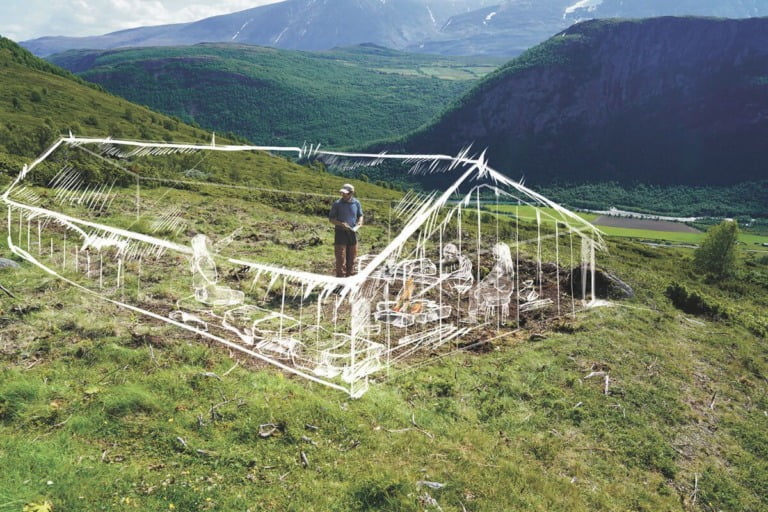
For the past few years, the Secrets of the Ice project run by Innlandet county has turned up some findings that have made headline news around the world. The team are investigating several archaeological sites at-risk of damage due to the melting of Norway's glaciers.
The mystery of the mountain trail
Last year, glacier archaeologists made the stunning discovery of a lost Viking Age mountain pass. But it raised more questions than answers. We know Vikings lived by the coast or along the fjord for easy access to the water.
So the discovery of the Lendbreen mountain pass, which had no written records, raised some fascinating questions. Along the trail, remains of sleds, animals, clothing and even household items were found amid the ice.
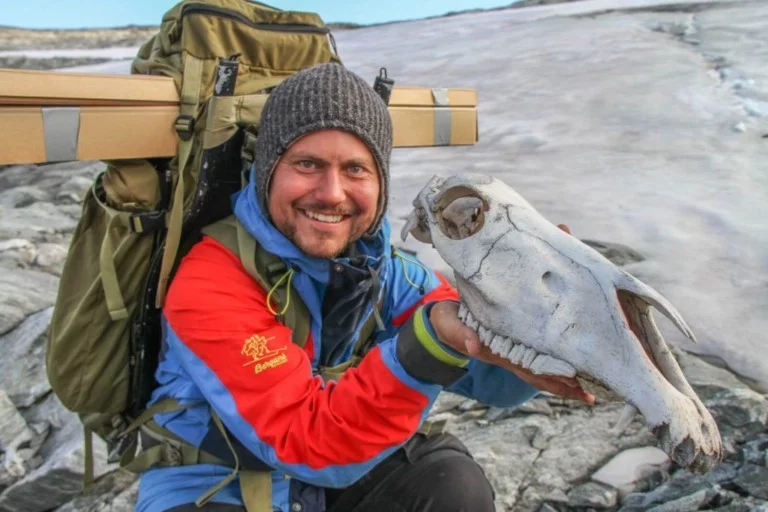
So what did the mountain pass for, who used it, and where were they going? Could it have been locals travelling to and from summer farms and pastures, or long-distance travellers heading for the fjords?
These are some of the questions the team has been working to answer.
“To gain an answer, we realised that we would have to walk in the footsteps of the Vikings – follow the Lendbeen trail and see where it would take us. So we did just that and the trail led us to an unbelievable discovery – a lost Viking settlement!” said Lars Pilø.
Discovering the lost Viking settlement
Pilø picks up the story: “We followed the trail into a valley and further west. As we approached the Neto summer farms, the signs of heavy traffic grew increasingly clear.”
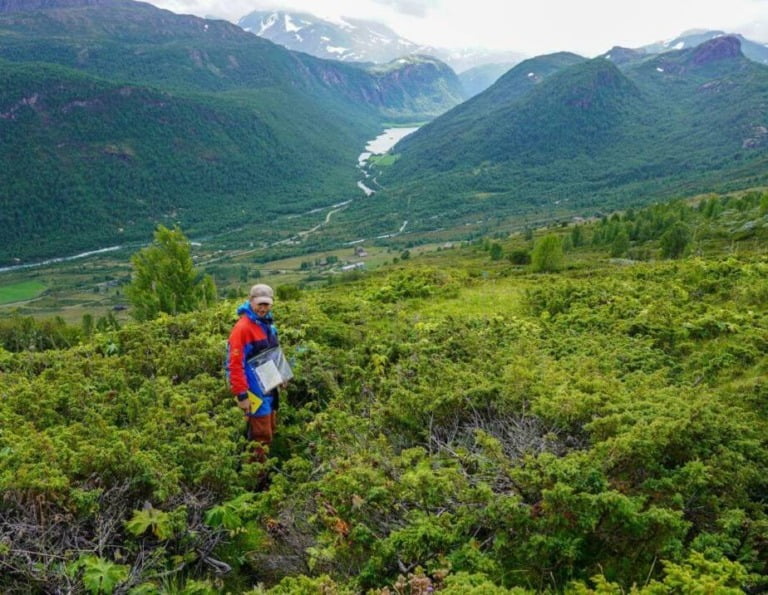
The team found paths carved into the terrain from people and their animals over time. Although the trail was covered in junpier, the team could see the trail veered off in an unexpected direction, above the summer farms.
Local hobby archaeologist Reidar Marstein made the key breakthrough. While searching through thick juniper bushes above the summer farms, he found remains of buildings.
21 structures found
A total of 21 structures were discovered in the initial survey. The team then cleared away thick juniper bushes to better understand the layout of four of the structures.
Pilø said the exposed ruins gave an immediate historic impression: “Their outer walls were visible as low embankments, and small tests with an auger centrally in the ruins revealed charcoal in the ground, perhaps from hearths.”
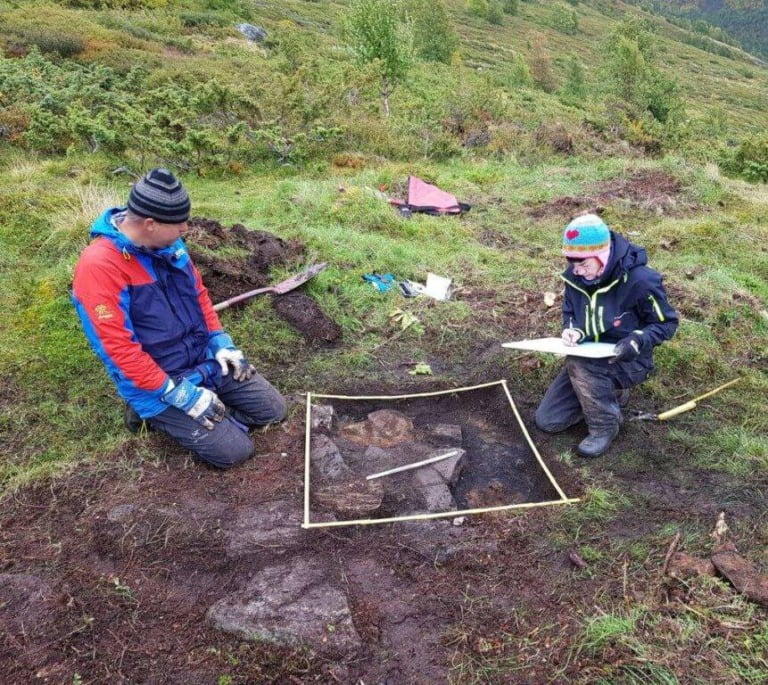
Excavating and dating the settlement
Archaeologists made small test excavations inside some of the structures. The work confirmed they were walls from former houses. The team also found remains from raised stone platforms along the side walls. They are a typical feature of such houses.
Testing of the charcoal confirmed there had been centrally-placed hearths inside, and also allowed radiocarbon dating. All five samples sent were dated to between the years 750 and 1150, covering the full timeline of the Viking Age.
What type of settlement?
Of course, dating the buildings is only a small part of the puzzle. They are likely connected to the high traffic through the Lendbreen mountain pass, but their precise functions remains unknown.
Perhaps they provided overnight shelter for travellers, or even a permanent farming settlement. Extensive hunting for reindeer took place in the nearby mountains, so maybe the buildings could have served as a hunting station.

“Pollen analysis from a nearby bog shows that farming starts in the Neto area around AD 300, at the same time as the traffic over Lendbreen began. Surely this is not just another coincidence?” said Pilø.
The houses could also have been used as a hunting station. Reindeer were hunted intensively in the mountains above Neto.
A legend – verified!
But there's one more fascinating twist in this story! Written records from the 18th century tell of an ancient settlement at Neto long before the summer farms that stand there today. Now we know the legend was true.
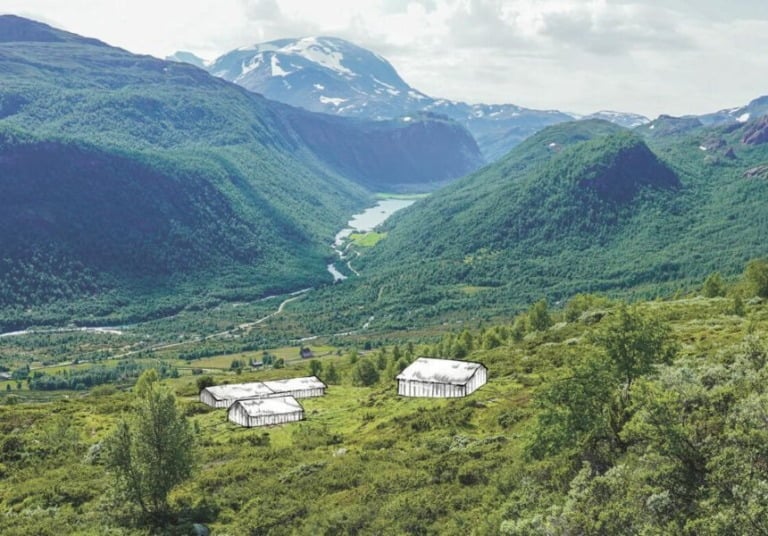
Nest steps in the research
“The discovery of the Viking settlement is terribly exciting. It adds a completely new dimension to the finds from the Lendbreen mountain pass. But there are still many mysteries to solve here,” said Espen Finstad.
“The plan is to continue the investigations at Neto this summer. We are also preparing further surveys following the trail west from the Viking settlement towards the fjords. We hope there will be more exciting discoveries along the trail here.”
You can read more about the research and other fascinating projects from the glacier archaeology team at Secrets of the Ice.

